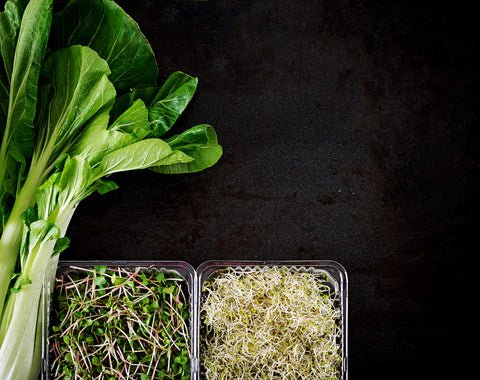Before we talk about how to grow microgreens, let’s talk about what microgreens are. There’s still a lot of confusion about what microgreens actually are and how they differ from sprouts and mature plants.
First off, microgreens are simply baby plants. They’re not different species and they’re not necessarily grown differently from the plants in your garden...they’re just harvested sooner.
While sprouts are seeds that have sprouted a little but have not begun to photosynthesize, and adult plants have been allowed to grow until maturity, microgreens are somewhere in the middle. Microgreens have begun to photosynthesize, so they have vibrant colors and flavors. However, they’re still small plants so their nutrients haven’t spread out and become diluted as in adult plants.
Sprouts carry a high risk of bacterial contamination due to the way they’re grown, and adult vegetables often require months of growth until they can be harvested. Microgreens, on the other hand, pose a very low risk of contamination and can be harvested in only a couple weeks! Check out our June blog for more on why you should make the switch to microgreens.
 From left to right: adult plant (bok choy), microgreens, sprouts
From left to right: adult plant (bok choy), microgreens, sprouts






